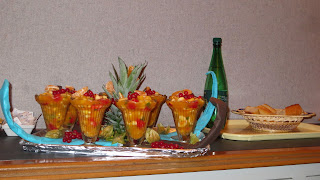I have got a Visiting Professorship to France and I am here from November 15th to 30th December, 2013. I
want to share some thoughts on the French system of education.I teach a regular course to the University of Artois to students three days a week and besides this many lectures are arranged outside the University. I have been interacting so much with students of different levels here in France in Arras, in Paris that I am very impressed with their approach towards education. When I go for a public lecture to any College, I find a mix of students from age 10 to 35 and sometimes even 40 sitting to listen to me. In all these years in India rarely did I interact with school or Intermediate system of education (unless I am invited as a chief guest) and certainly not in mix group. I am not sure how they manage this but I find all of them so serious and paying attention to what I am speaking. The management usually informs the students beforehand, one week to two days in advance about the topic I was going to speak on. I speak for ten minutes then there is a translation into French. The students all come prepared with questions about India and asked me many questions, especially about women's issues and women's movements or some aspect of Indian history. I had young students as old as twelve, thirteen ask me, can you tell me some thing about your caste system, how do you think this effects India, do you see any relevance in this today or why is there so much reporting of rape now. Do you think this is a media hype and what do you see as a change in India. I feel bad that we hardly have any analytical system of education in India and it is just by rote that our students study. I can never imagine a mix of student’s of different age groups sitting together.
When I give a talk all the student sit before their lap tops typing away. I am not sure why the management wants these students to be there. Are they sent to practice their English language and to get some general knowledge about India or Indian history, that is not at all a part of their syllabus. I have hardly done this kind of lecturing in India and keep wondering while I speak what will this young children get from what I am speaking. I am also conscious of the fact that there is a mix of age groups in the audience and try to make my self simple. But I am truly impressed at the efforts made by the management to expose students to different views.
The French education system is split into three
stages: primary school (école), secondary school (collège) and high school
(lycée). Primary and secondary education is free, neutral, secular and
compulsory between the ages of 6 and 16. However, there are some private
schools that are not subject to these obligations and particularities of the
French education system.The primary school curriculum in France is similar to
that in other countries, and includes literacy and numeracy, with classes in
French, arithmetic, but also geography and history, the arts, and more and more
frequently a foreign language, Middle school. Four levels, normally for pupils
aged 11 - 15. The "collège unique" is the backbone of the French
school system. All pupils go to collège, usually at age 11. The baccalauréat,
France colloquially as le bac, is an academic qualification take at the end of
the lycée (secondary education). It was introduced by Napoleon I in 1808. It is
the main diploma required to pursue university studies. Unlike English "A
levels" or Scottish "highers", the baccalaureate is a unitary
exam, that pupils pass or fail. It is impossible to pass in one subject and
fail in others. The only mark that counts is the final weighted average, which
must be at last 10/20 for a pupil to pass. Pupils who achieve just under 10/20
are often passed by the exam board, whose decision is final. This is an exam
which is said to be very difficult and I saw very serious studies being
undertaken to pass this exam. This exam is for the entry to a University.












